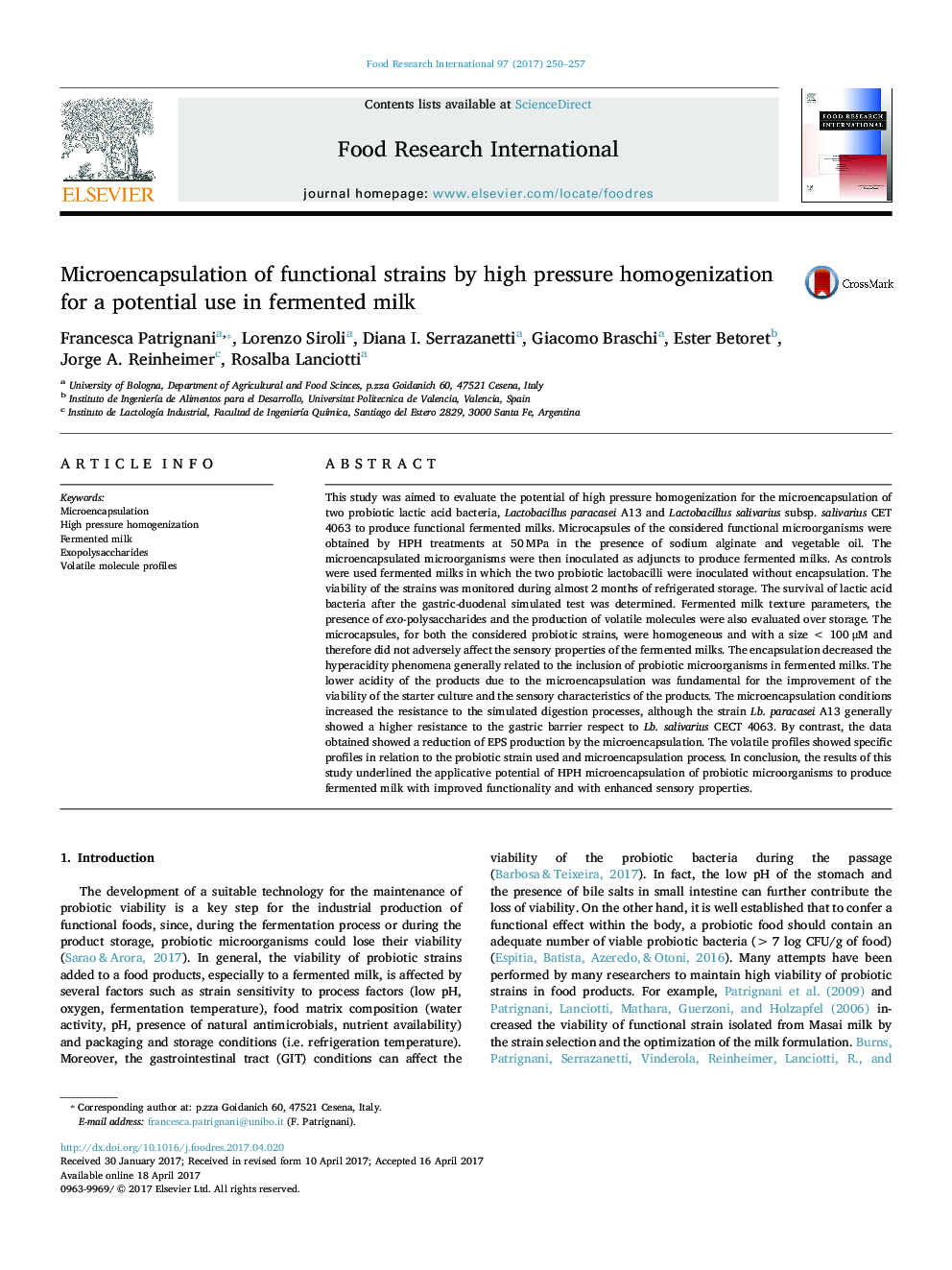| Article ID | Journal | Published Year | Pages | File Type |
|---|---|---|---|---|
| 5768230 | Food Research International | 2017 | 8 Pages |
â¢A treatment of 50 MPa for 5 passes resulted in stable microcapsules of Lactobacilli.â¢Microcapsules presented a high yield in terms of entrapped Lactobacilli viable cells.â¢Microcapsules maintained high lactobacilli viability in fermented milk during storage.â¢Microencapsulation of adjunct bacteria reduced the acidity of the fermented milk.
This study was aimed to evaluate the potential of high pressure homogenization for the microencapsulation of two probiotic lactic acid bacteria, Lactobacillus paracasei A13 and Lactobacillus salivarius subsp. salivarius CET 4063 to produce functional fermented milks. Microcapsules of the considered functional microorganisms were obtained by HPH treatments at 50 MPa in the presence of sodium alginate and vegetable oil. The microencapsulated microorganisms were then inoculated as adjuncts to produce fermented milks. As controls were used fermented milks in which the two probiotic lactobacilli were inoculated without encapsulation. The viability of the strains was monitored during almost 2 months of refrigerated storage. The survival of lactic acid bacteria after the gastric-duodenal simulated test was determined. Fermented milk texture parameters, the presence of exo-polysaccharides and the production of volatile molecules were also evaluated over storage. The microcapsules, for both the considered probiotic strains, were homogeneous and with a size < 100 μM and therefore did not adversely affect the sensory properties of the fermented milks. The encapsulation decreased the hyperacidity phenomena generally related to the inclusion of probiotic microorganisms in fermented milks. The lower acidity of the products due to the microencapsulation was fundamental for the improvement of the viability of the starter culture and the sensory characteristics of the products. The microencapsulation conditions increased the resistance to the simulated digestion processes, although the strain Lb. paracasei A13 generally showed a higher resistance to the gastric barrier respect to Lb. salivarius CECT 4063. By contrast, the data obtained showed a reduction of EPS production by the microencapsulation. The volatile profiles showed specific profiles in relation to the probiotic strain used and microencapsulation process. In conclusion, the results of this study underlined the applicative potential of HPH microencapsulation of probiotic microorganisms to produce fermented milk with improved functionality and with enhanced sensory properties.
Graphical abstractDownload high-res image (54KB)Download full-size image
